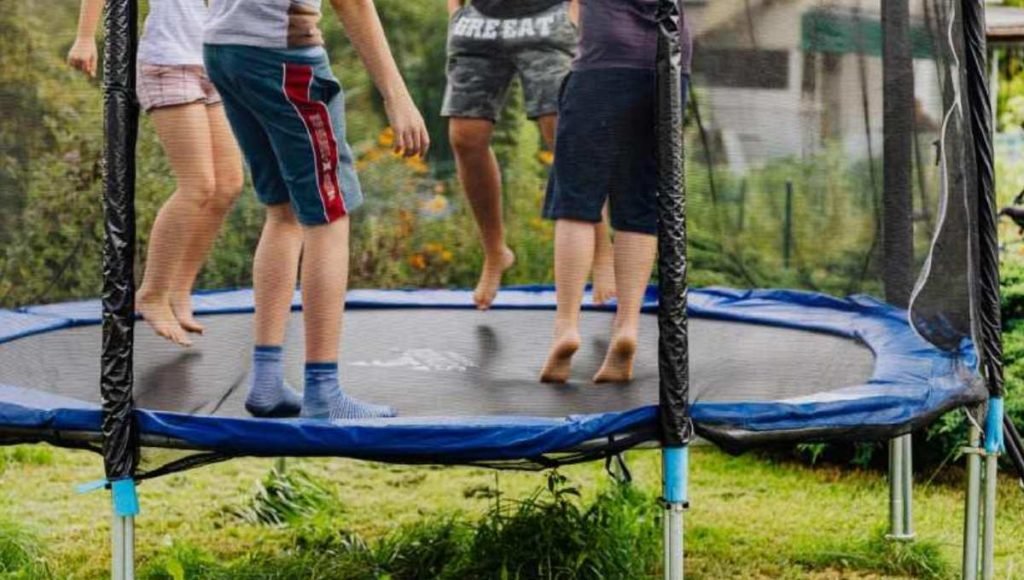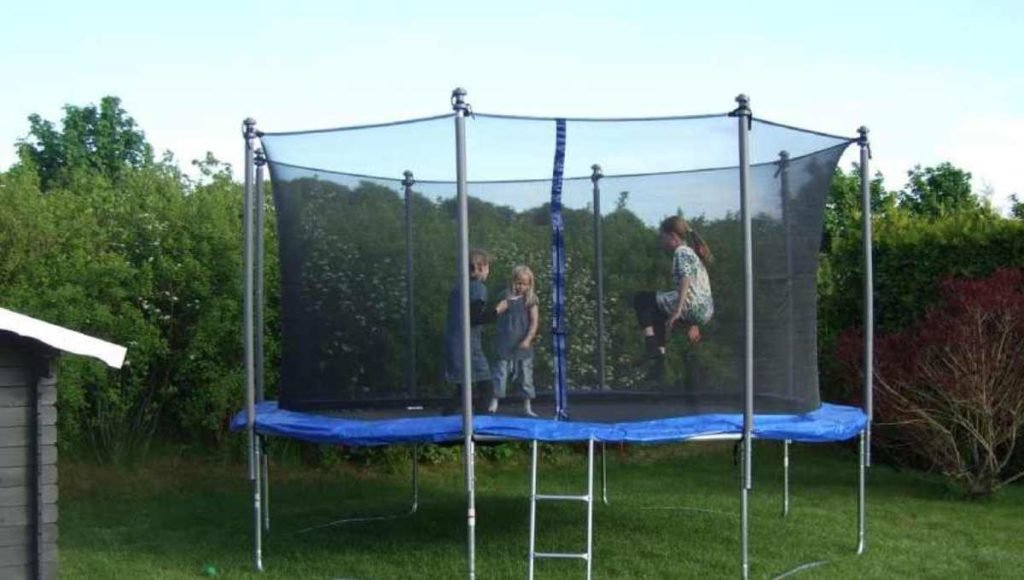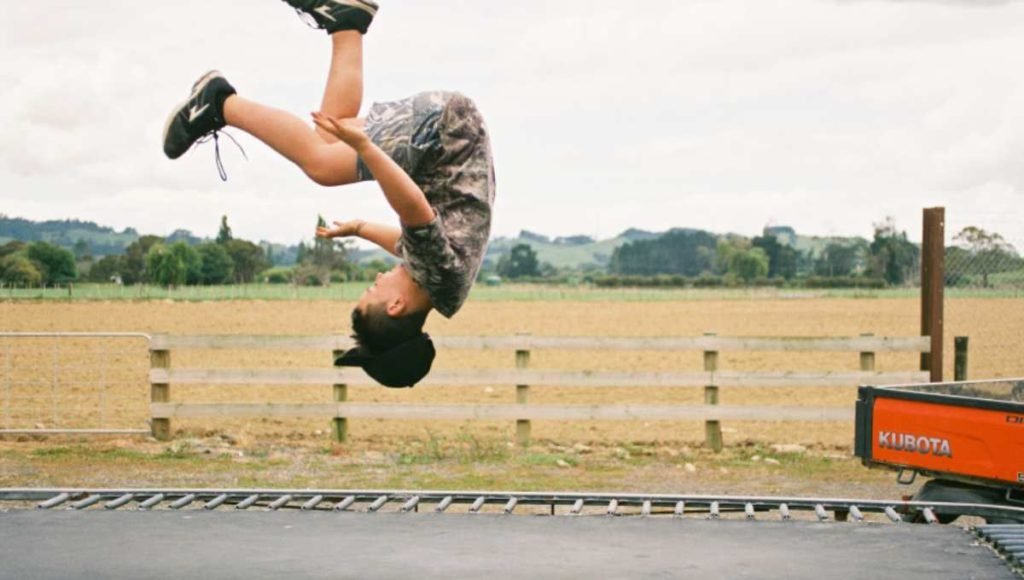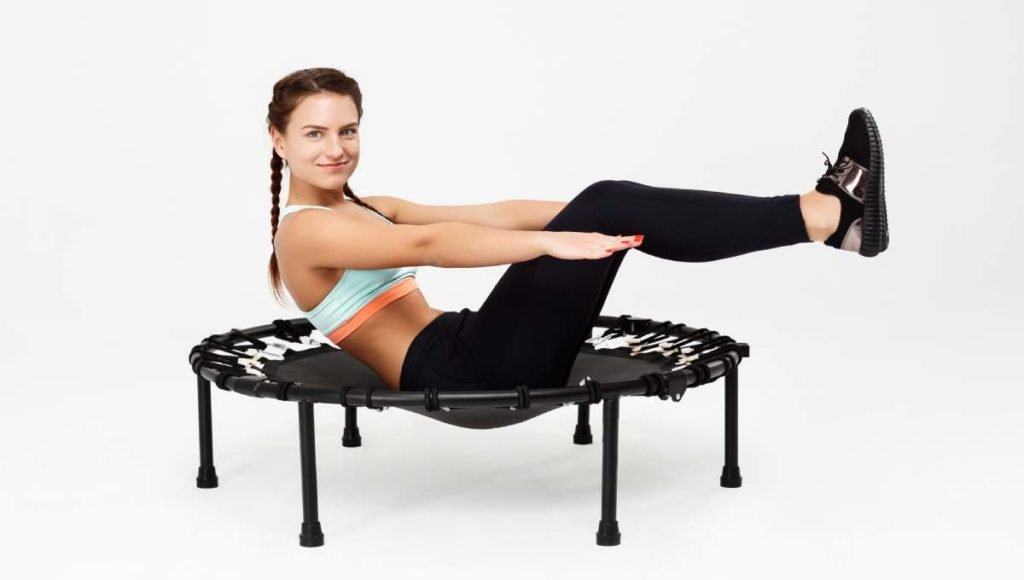Knee problems can happen at any time, anywhere. You can twist, strain, or hyperextend your knee while walking down the stairs. But today we are here to hold a specific object responsible.
Our quest to find out if trampoline bad for knees has revealed many shocking facts about rebound exercises and the use of mini-trampoline.
Trampoline is a low-impact activity. Not as intense as football, tennis, or baseball. Those are high-impact activities. So the clear answer is, the trampoline is not bad for your knee. Patients with chronic knee problems won’t be harmed by rebounding on a trampoline.
Is trampoline bad for knees?
Every exercise has a health hazard. Unfortunately, trampoline jumping also has one. It’s called a rebounder knee injury.
Now it won’t happen unless you hyperextend your knees during a rebound. A hyperextended knee is not a medical emergency right away. It depends on the severity of your injury.
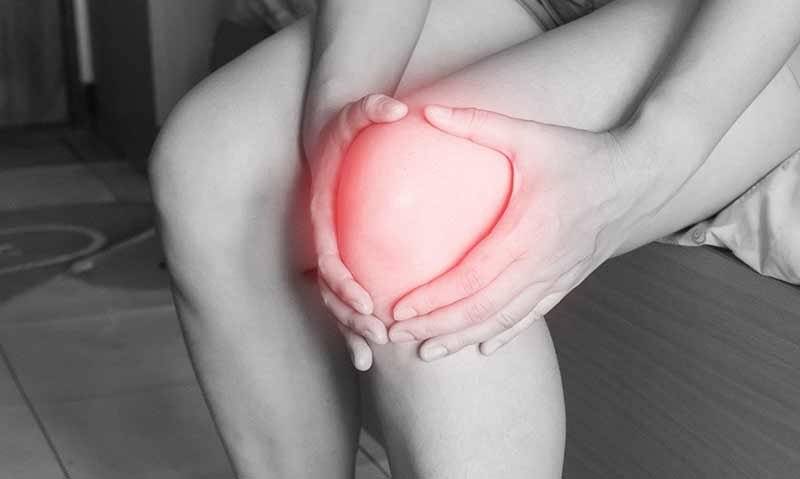
A hyperextended knee injury happens when you accidentally twist your knees against its natural elastic movements. If a minor ligament tear occurs, you’ll feel pain for a couple of days. While in some cases the road to recovery is through surgery.
Once you hyperextend your knees, you’ll see visible swelling. And your movements will be temporarily impaired. So rebounding can result in hyperextension of your knee if you land awkwardly.
Another common cause of knee injuries occurs when the jumper rebounds on the age of the trampoline. Now that won’t be an issue if the edge is covered with a thick safety pad.
If you don’t have a thick safety pad then I recommend you to use Exacme Trampoline thick Safety Pad.
If not, then there might be a chance that you could experience a bad landing resulting in ankle or knee twists, cuts, and bruises because the edge is where metal springs and screws hold the trampoline mat.
But trampoline-related knee injuries are rare. Unless you land on an awkwardly bent knee, there is zero chance of hurting your knees because of the introduction of trampoline flexible safety nets.
Does that mean the trampoline is good for our knees?
Yes, a trampoline is perfect for your knees. Any exercise involving rebound is suitable for your bone health, and it helps to retain its density.
Is rebounding good for arthritis?
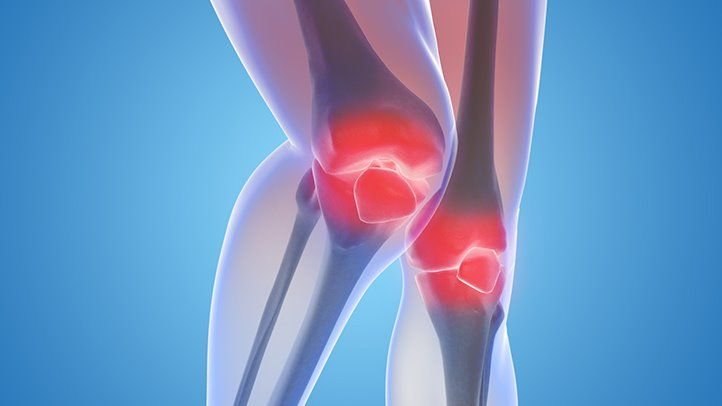
Arthritis is a severe disease. You can’t even walk or run without aching in pain. However, patients who used mini-trampoline to rebound have shown to improve their symptoms quite well.
Slowly jumping and rebounding on a mini trampoline is better than mild jogging and even walking. Because rebounding puts 80% less pressure on your knee joint, so you can slowly strengthen your knees without absorbing impacts from hard surfaces.
Here I have listed some of the best mini trampoline for you. That will help you to choose the best one from the market.
Those still a bit skeptical about rebound exercise, come and hop onto a mini-trampoline. You might experience difficulties for the first time. You might not be able to stay on the trampoline for a minute.
But don’t give up. Trust me; once you get on the trampoline and start bouncing, you’ll be able to endure and increase your time slowly. After a couple of weeks, you’ll feel fantastic, and the pain will ease up a bit.
Is it safe to use a rebounder with a bad knee?

It depends on how comfortable you are on the trampoline. And you have to understand that injured our knees due to impact or twisting is different than developing chronic medical conditions like arthritis.
So if you have injured your knee for some reason, then getting back up on the trampoline isn’t a good idea. At least wait until the pain eases up in a week or two.
During that time, avoid strenuous activity like push-ups, squats, brisk walking or running. Once you’ve to feel a bit alright then hop onto the trampoline. Rebounding isn’t as impactful on your knees like other extreme sports.
Because rebounding is known to be a low impact exercise, but before you hop onto your rebounding session, please don’t use a spring trampoline. And although rebounding impacts less on your knees, take it slow and easy. Don’t put pressure on your knees on the first day of your comeback.
A few rebound exercise tips for your knees
Those who suffer from chronic knee problems should start on a rebounder training program immediately. The goal is to strengthen the muscles surrounding the knee areas to relieve some pressure off the knee joint.
Exercise 1: Health bounce. Use our heal to create a jumping motion on the mini-trampoline slowly. Make sure that your feet always stay on the trampoline. You should bounce like that for at least 2-5 minutes for maximum effectiveness.
Exercise 2: Spread your legs at each of the mini-trampoline. Then start to stomp slowly onto the trampoline mat with both of your feet. Keep stomping and slowly lean downwards to a crouching position. Try to go as low as you can. Don’t overdo it, especially if you’re not comfortable.
Exercise 3: Here you have to bunny hop. Don’t panic. It’s easy and involves no real elevation. Try to jump a little with both of your legs. Make sure you land with both feet close to each other. Now continue this jumping motion from left to right with both feet landing together. Imagine you are jumping back and forth on a surfboard. Only jump side by side on the mini-trampoline rebound session.
There are hundreds of rebound exercises available to strengthen your knees. But I think these three exercises are perfect for beginners. First, do these three exercises for a couple of weeks. Once you’re comfortable on the trampoline, we’ll move onto something even more adventurous.
Benefits of using a mini trampoline
In this lockdown state, I think the most significant advantage of a mini trampoline is the advantage of working out from home. Despite this global pandemic, mini-trampoline benefits those who can’t work out on their cardio due to rain, snow, and other surprises from mother nature.
Another considerable advantage is the smaller size. Unlike a full-size trampoline, which demands tons of space, a mini trampoline can easily fit in any kind of living room.
You may follow this whole mini-trampoline exercise routine and the health benefits of a mini-trampoline. Also, check out this best mini trampoline in-depth review based on a real user experience.
People of all ages can reap the benefits of a mini-trampoline. Those who suffer from cardiovascular diseases, varicose veins, and arteries get the most help from rebounding workout on a mini-trampoline.
The recommended size of a mini trampoline should be at least 3 feet in diameter. Perfect size for controlled jump and rebound gently.
Beware, people with chronic knee conditions shouldn’t be overly active on a mini-trampoline because it might lead to inflammation of the ligaments and tendons.
Just follow those three exercises mentioned above, and you should see your knee strength improvement within a month.
Ending
Let me end by emphasizing safety measures. Yes, you still need to be careful even on a mini-trampoline. Patients with chronic knee problems should wear athletic shoes. These shoes have thick cushions which lessen the impact from hard surfaces.
The bottom line is, the trampoline is bad for your knees, only if you land on them awkwardly and twist your knees in the process.
